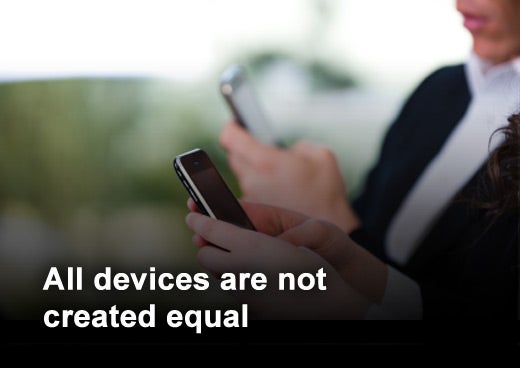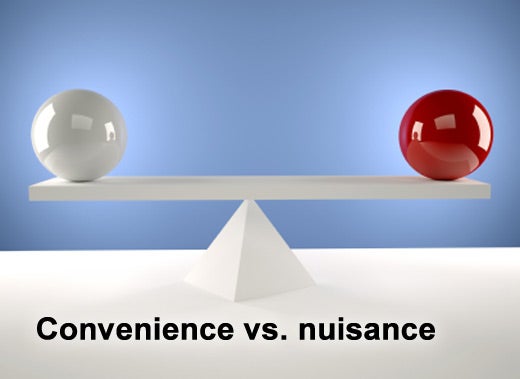By 2015, companies will generate 50 percent of their Web sales via their social-media presence and mobile applications, according to Gartner, Inc. As context gains importance, analysts revealed eight dos and don’ts to leveraging context-enriched mobile applications in customer relationship management (CRM) to drive sales and increase customer satisfaction.
“By 2015, context will be as influential to mobile consumer services as search engines are to the Web and information about customers will no longer be limited to data stored in company-owned systems,” said Gene Alvarez, research vice president at Gartner. “Context information can be about identity – such as who you are and your calendar, environment – where you are and the device you use, process – things you do and what you allow and community – who is in your networks and who you communicate with. If used correctly, context information facilitates the move from e-commerce today to contextual commerce tomorrow.”
This slideshow highlights the eight dos and don’ts Gartner identified for context-enriched mobile applications.
Click through for eight dos and don'ts for driving sales with mobile applications, as identified by Gartner, Inc.
- Do allow first-time entry (profile creation) from any point of interaction.
- Don't require the users to sign up on the website before they can use the mobile application.
If a smartphone application requires users to register with the website before they can consummate a transaction via the phone, companies might lose the sale — and perhaps even a customer. Organizations should also ensure that any information entered on the phone is updated to the master profile in real time.
- Do map capabilities to the endpoint device and network.
- Don't assume that all endpoint devices are equal, or that all networks have equal capacity.
Strong adoption requires that the application be accessible, so applications that require special conditions to download or operate will be less used. “Surprisingly, some applications ignore basic mobile development best practices, such as requiring a Wi-Fi connection, as opposed to simply a strong mobile signal, to download as they were so large – sometimes more than 10MB,” said Mr. Alvarez.
- Do cede control of community participation to the end user.
- Don't connect the user to others without permission.
Customers will not use applications if they believe that they are ceding control of their networks and their privacy is being violated. This is one of the reasons for the increase of the "check-in" model in mobile social networking, where the user has to explicitly locate himself or herself in a particular venue before information that he or she is in a location is transmitted to other people in that person's network.
- Do remember that this is an invited relationship — leverage as many channels as the user will allow.
- Don't overwhelm the user.
Organizations will need to strike a delicate balance between using context information enough so that it improves the service as opposed to too much, which will just annoy. Some applications allow users to set a preference for the types of alerts they want and the times that they want them.
“Being bombarded with unwanted offers at all hours is singularly unattractive and would probably do a great deal to engender animosity toward the offering party, rather than customer intimacy,” said Mr. Alvarez.
- Do make sure you have established business relationships, and make sure partners know what they need to know.
- Don't design without partner input.
Interactions with business partners must be seamless to the user. For example, an application that Gartner looked at for ordering pizza showed nearby restaurants, and the application allowed the user to build a pizza order, which it would then transmit to the chosen restaurant. “As a test in a local restaurant, I went through the steps of ordering a pizza at that restaurant. The restaurant's phone rang several moments later with an automated voice response system trying to order the pizza on my behalf. Its menu was so difficult to navigate that the manager of the restaurant told me that if he had not known that he was part of our experiment, he would have hung up the phone. Clearly, this is a recipe for frustrated customers and business partners,” said Mr. Alvarez.
- Do leverage Gartner's information model for context-enriched services to discover the types and sources of context information you can use.
- Don't duplicate information and sources that are already available.
Many organizations think that simply making their applications location-aware qualifies them as context-enriched commerce, but simple location awareness does little to increase customer engagement.
“Some applications are simply translations of Web-based applications that establish users’ location by asking the user to enter a post code to find the closest store or outlet,” said Mr. Alvarez. “Particularly in mobile applications, where location is readily available through the phone itself, asking the user to input their location is unacceptable.”
- Do maintain user information across platforms and sessions.
- Don't require the user to go to more than one platform to complete the transaction.
“Some mobile phone applications require that certain functions, such as entering credit card information or profile management, be performed on the company's website,” said Mr. Alvarez. “Imagine the frustration of a user trying to complete a transaction from the mobile phone, but using a different credit card. This is a lost sale for the organization and no incentive for the customer to remain loyal.”
- Do be proactive.
- Don't just wait for customers to tell you what they want.
Applications that require the creation of a user profile will therefore have at least some information about the consumer and this should be leveraged, e.g., by proactive suggestions based on a knowledge of the consumer, their preferences and history of interactions.
“When experimenting with context-enriched mobile applications in CRM, it can be unclear how customers will react, so CIOs should track how customers respond to offers,” said Mr. Alvarez. “You will find out what your users like and don't like about the way you have used context information to improve their experience, and you can incorporate those findings into your development plans.”











